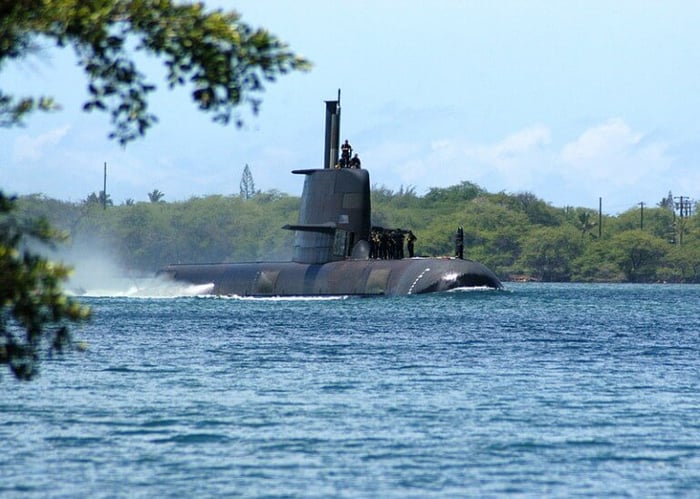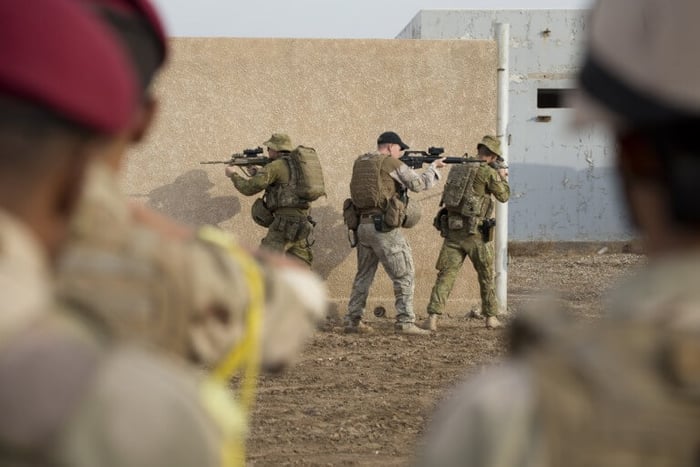
Australia's Future Submarine: Getting the Facts Rights
In the extensive discussion about the decision on the future submarine project a key point has been missed. The government intends to sign what is merely a three year design contract with the French company DCNS. The government (and the contractor) then have the option to contract for the build, or start the process over again, or follow another track.
While a French build is probable, the eventual decision, the real one, could be affected by factors ranging from another global financial crisis (making the subs unaffordable), to a new Defence White Paper being prepared that outlines a more rational role for Australian submarines rendering the current specifications redundant.
The specification that has driven the SEA 1000 CEP is the 12,000 nautical mile range. Meeting this requirement has made the submarines too big for their important tasks in our region. These include the dispatch of special forces, surveillance, the monitoring of choke points, and interdiction, often in relatively shallow waters. The Collins, at around 3,400 tonnes displacement when submerged was considered big for these tasks. A 5,000 tonne vessel is ridiculous. The Navy has been enabled to go down its usual path of ‘the bigger the better’ because the Government has not provided a clear guide to the future role of the submarines.
So the assessment team appear to have made the right choice against the specs they were given. They have chosen what may well be an excellent small nuclear submarine but ours will come with non-nuclear propulsion.
Many questions remain to be resolved in the design phase though some issues will take longer. Most importantly the French propulsion system is designed to feed off a nuclear reactor. Whether it can produce the claimed efficiency and quietness in the new conventional format can’t be known until sea trials in the 2030s.
If the central underlying principle of the 2016 Defence White Paper is that we can best defend Australia as part of the US-led coalition force structure then we should just buy the French submarines with nuclear propulsion off the shelf. If we are to take a more self-reliant stance then simply upgrading the Collins-class is the best and by far the cheapest option.
The Collins is apparently now performing extremely well. It has many years of hull life left. Equipped with a more economical and quieter drive train, sonars, and whatever else offers significant improvements to the fleet, a major life extension could be achieved for something like 20% of the cost of new submarines.
Some variant of this process is likely to be required anyway, as the new submarines aren’t expected to be delivered until the early 2030s. Through a total makeover rather than a further partial upgrade the requirement for new subs could be postponed at least a decade, allowing rapidly evolving battery technology to mature, alongside the development of a more considered Australian strategic policy taking account of new global realities. It would also save tens of billions for the Commonwealth budget.
Perhaps after this coming election the government will admit that nothing much is going to happen in Adelaide until after the following election, as it will take that long for the design to be produced and evaluated. They should also admit that the steel for the subs will likely be imported—unless they’re prepared to pay a vast sum of money for a one-off purchase. And they may admit the total value to Australian industry of the build program will more likely be about 35% of the contract price rather than 75%, since the value will come mainly from assembly as nearly every nut and bolt will be imported.
Perhaps we’ll also be given an explanation of why we need twelve submarines. If there’s a valid strategic reason, and the Collins upgrade was chosen as the best current option, more of an evolved Collins class could be built in Adelaide at a fraction of the new submarine cost.
It’s even possible, after the election, that truths may be told about the capacity of Australian industry. We now have much less technical capability than when the Collins was built. We now build nothing for the oil and gas industry, and very little for the mining industry; we don’t manufacture any white goods, are about to stop making cars, fabricate much less steel, and are shutting oil refineries rather than building them.
In the lead-up to the Collins purchase it was argued that an Australian build would up-skill Australian industry enabling firms here to win future non-defence work. That didn’t happen as other regional economies developed rapidly and could always win on price and eventually on quality. There’s now virtually no prospect of submarine work developing skills in Australia that will provide long-term benefits other than in submarine maintenance.
It’s fortunate that the real decision on the new submarines won’t have to be made until after the 2019 election. Hopefully by then we will have a much better understanding of the technologies available to us, clearer strategic guidance, and a government prepared to take Defence, and defence spending, seriously. We may even have come to a more rational understanding of the limits of Australia’s industrial capacity.
AUTHOR - Syd Hickman served as senior advisor to former defence minister, Kim Beazley, at the time of the selection of the Collins-class submarine in 1987.
 This article was originally published on The Strategist and is republished here with kind permission.
This article was originally published on The Strategist and is republished here with kind permission.











